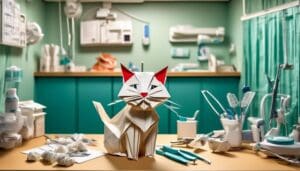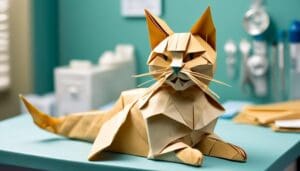Have you ever noticed your aging cat isn’t as enthusiastic about mealtime as they once were? You’re not alone, and it’s possible that dental issues could be at the heart of this change. As a compassionate caregiver, you understand that your cat can’t tell you when they’re in pain, making it crucial for you to recognize the subtle signs.
Halitosis, or bad breath, isn’t just unpleasant—it can be a harbinger of gingivitis or periodontitis, common dental ailments in senior cats. Difficulty eating, which might seem like pickiness, can actually signal a serious problem like tooth resorption. If you’ve spotted red or swollen gums during your affectionate chin scratches, it’s time to consider that these could be more than just signs of age.
Each indicator is a piece in the puzzle of your cat’s health, and understanding them could be key to unlocking comfort and vitality in their golden years. Let’s explore the implications of these symptoms and what they could mean for your beloved cat’s quality of life.
Key Takeaways
- Halitosis and drooling can indicate dental conditions like plaque buildup, tartar, or gingivitis.
- Difficulty eating, including shying away from food and chewing with discomfort, can be a symptom of dental distress.
- Regular oral hygiene practices and veterinary check-ups are crucial for early detection and prevention of dental issues in aging cats.
- Dental issues can greatly impact a cat’s overall health, comfort, and quality of life, so swift intervention and proactive care are essential.
Halitosis and Drooling
When your aging cat begins to have noticeably bad breath or starts drooling more than usual, it’s often a sign that they may be facing dental issues needing your attention and care. Halitosis, the medical term for bad breath, can be more than just an unpleasant smell; it may signal that your beloved pet is suffering from dental conditions such as plaque buildup, tartar, or the painful inflammation known as gingivitis.
As you tenderly observe your older cat’s behavior, consider that drooling when excessive, is another red flag. This symptom could point toward more serious oral health problems like periodontal disease, tooth resorption, or even oral tumors, which require swift veterinary intervention.
You’re not just a pet owner; you’re a guardian of your aging cat’s well-being. Embracing regular oral hygiene practices can help prevent the onset of gum disease and tooth decay, ensuring that signs of mouth pain don’t go unnoticed.
Difficulty Eating
As you monitor your aging cat for signs of mouth pain, also take note if they’re having trouble during mealtime, as difficulty eating can be a telltale symptom of dental distress. Your beloved cat may shy away from their food, drop kibble from their mouth, or chew with evident discomfort. These are signs of pain that shouldn’t be ignored.
When your cat prefers softer, moist food over their usual dry fare, it’s a gentle whisper of their struggle and a possible indication of dental disease in cats. Loss of tooth support can make crunching painful, leading them to seek relief in easier-to-eat options. If you’ve noticed weight loss accompanying their hesitance to eat, this could further highlight the impact of oral issues on their overall health and appetite.
Watch how they chew: Are they favoring one side of the mouth or swallowing kibble whole? This avoidance behavior is poignant evidence that your cat’s quality of life may be compromised. Signs of gingivitis or the need for affected teeth to be extracted can manifest in these subtle yet significant changes in their eating habits.
Red or Swollen Gums
If you notice your cat’s gums appear red or swollen, it could be a sign of gingivitis, a condition that requires your gentle attention and care. This inflammation of the gums is more than just an aesthetic concern; it’s an oral health issue that can lead to more severe complications if left unaddressed.
Here’s what you should look out for:
Redness and Swelling
- These are the primary signs of gingivitis.
- Gums may be tender and bleed easily.
Bad Breath
- Often accompanies gum issues.
- Is a telltale sign of oral hygiene problems.
Gingivitis can progress into dental disease causes such as plaque buildup, leading to feline chronic gingivostomatitis, a painful condition characterized by severe oral inflammation. To prevent gingivitis in cats, consider regular dental check-ups and establish a home care routine that includes tooth brushing with cat-specific toothpaste.
Your care can make a world of difference in preserving the oral health of your aging cat. By staying vigilant and proactive, you can help ensure that your cat enjoys comfort and wellness throughout their golden years.
Frequently Asked Questions
What Are the Signs and Symptoms of Dental Disease in Cats?
You’ll notice your cat’s dental disease through symptoms like bad breath, difficulty eating, and visible tartar. It’s crucial to seek veterinary care to ensure their comfort and health.
At What Age Do Cats Start Having Dental Problems?
You’ll often find cats starting to experience dental problems as young as 3 years old, so it’s important to begin dental care early to prevent discomfort and more serious issues later on.
What Is Stage 3 Dental Disease in Cats?
You’re dealing with stage 3 dental disease in your cat, which means they’re facing severe issues like intense gum inflammation and possible tooth loss, requiring prompt and compassionate veterinary care.
How Can I Tell if My Cat Has a Problem With His Teeth?
You might notice your cat’s reluctance to eat, persistent bad breath, or even a visible buildup on the teeth—clear signs it’s time to gently care for their dental health.




